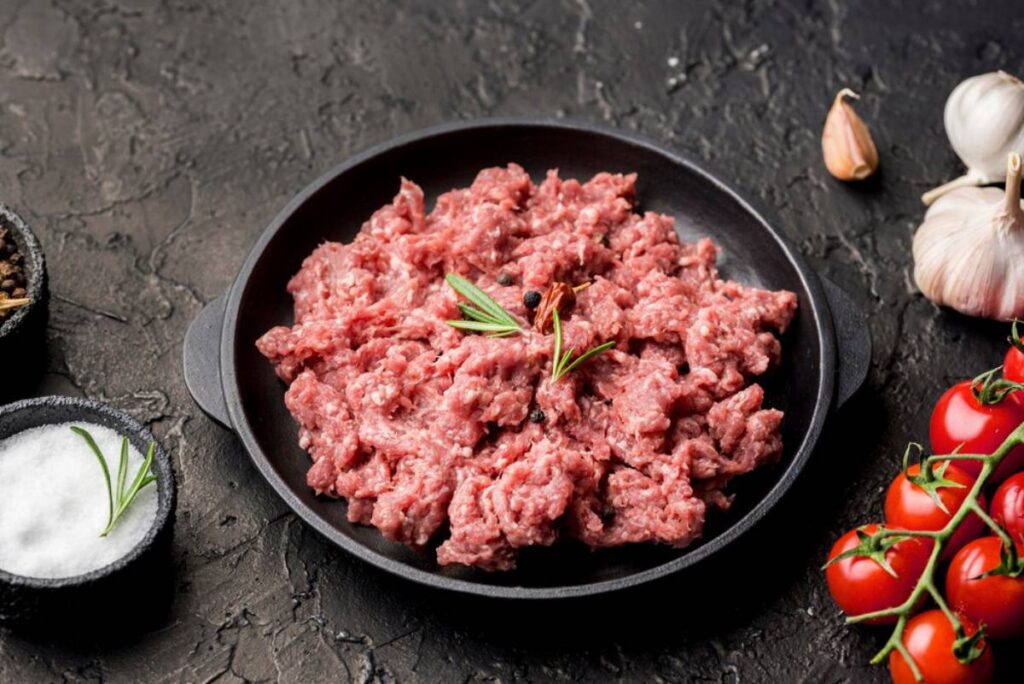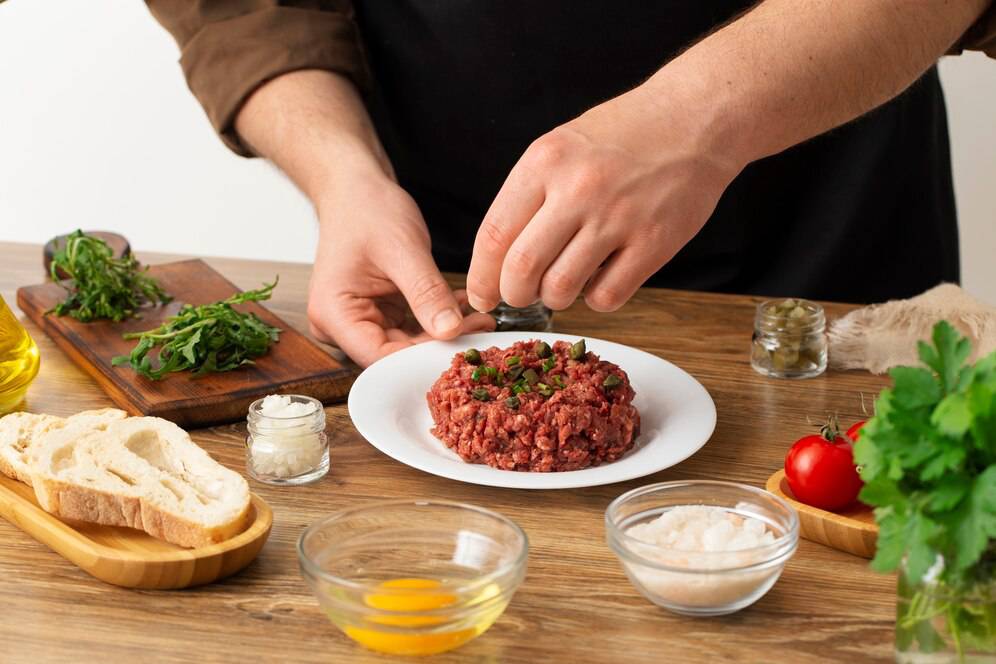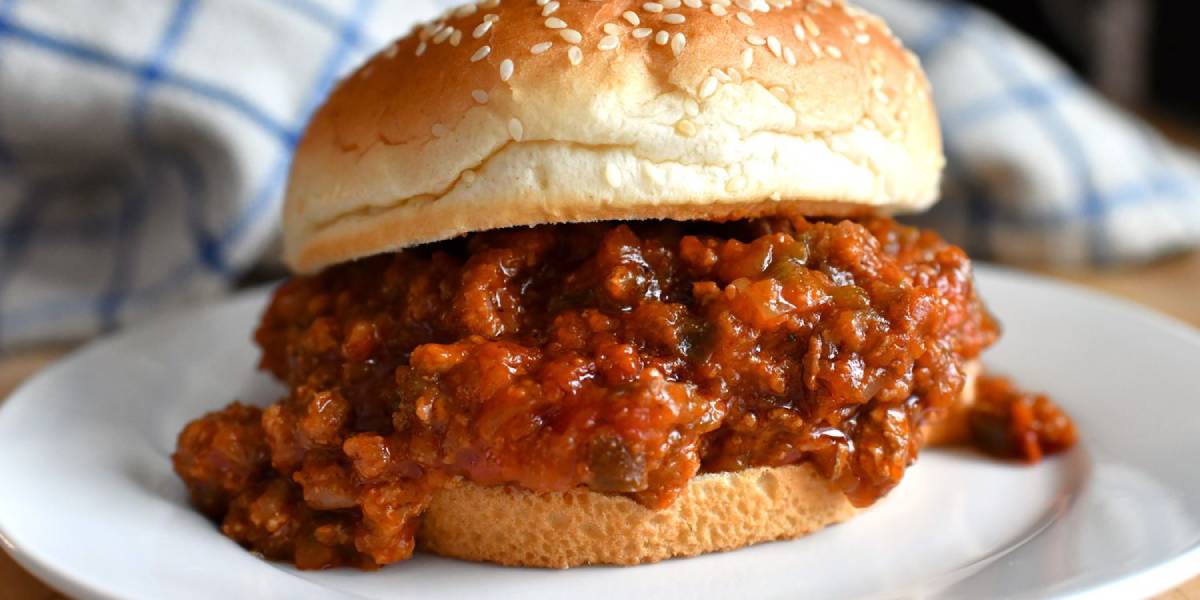The Food & Recipes Blog

Healthy Sloppy Joes in 15 Minutes
There are dishes that exist to soothe, and others that exist to satisfy. The Sloppy Joe, in its classic American form, attempts both—albeit in a fashion that tends toward the chaotic. It is unpretentious, unapologetically sauced, and often loaded with the kind of nostalgia that resists refinement. But nostalgia, left unchecked, can dull the palate. And so we revisit the dish—not to gentrify it, not to rebrand it as health food, but to recover its structure.
This Healthy Sloppy Joe, prepared start to finish in fifteen minutes, is not an impersonation of its messier predecessor. It is a disciplined recalibration of its parts: ground beef, simmered with vinegar and aromatics rather than sugar and salt alone; tomato paste instead of ketchup; spices layered with restraint rather than poured from a bottle. The result is not a lesser thing, but a clearer one—shaped by heat and habit, but governed by pace and proportion.
It remains “sloppy,” if one insists on nomenclature, but it is no longer directionless.
Ingredients (Serves 2–3)
- 300g lean ground beef, preferably 90/10
- 1 small yellow onion, finely diced
- 1 garlic clove, grated
- 1 tbsp olive oil, or other neutral oil
- 1 tbsp tomato paste, double-concentrated
- 1 tsp smoked paprika
- ½ tsp ground cumin
- 1 tbsp apple cider vinegar, or red wine vinegar
- 1 tsp mustard (Dijon or whole grain)
- 100ml water or low-sodium beef stock
- Salt and cracked black pepper, to taste
- Optional: a pinch of cayenne, or a teaspoon of Worcestershire sauce for depth
To serve:
- Wholemeal buns, lettuce cups, or toasted sourdough
- Pickled onions, sliced gherkins, or a spoonful of Greek yoghurt
Method
1. Construct the base: Warm oil in a wide skillet over medium heat. Add the onion and cook until softened but not browned—aromatic, translucent, patient. Introduce the garlic and tomato paste; stir until the paste darkens slightly, its raw acidity subdued by heat.
2. Introduce the protein: Add the beef and break it gently into the pan—no violent scrambling, just a steady transformation from pink to browned. As the meat renders, season with paprika, cumin, salt, and pepper. Stir sparingly. Let the ingredients integrate, not collide.
3. Build the body of the sauce: Add vinegar, mustard, and water. Stir and reduce until the mixture is cohesive—moist but not runny, thickened but not dry. The sauce should cling, not drip. Adjust seasoning if necessary, and taste for sharpness, not just salt.

4. Serve with clarity: Spoon onto toasted buns or nestle into lettuce leaves. Add nothing unless it contributes. The meat is the message. Any accompaniment should enhance, not distract.
A Note on Revision, Not Reinvention
This dish does not masquerade as health food. The term “healthy,” if it applies at all, refers less to the omission of ingredients and more to the removal of excess. Sugar is not essential to this profile; sweetness, if it appears, should arise from the natural sugars in tomato and onion, reduced through cooking. Fat is present but not excessive. Protein is central, but not overwhelming.
You get density without heaviness—a plate that still feels grounded, but no longer lumbering. You can finish it and continue your evening.
Common Missteps
1. Oversaucing: Sloppiness, in the culinary sense, is not a virtue. Too much liquid dilutes flavour, obliterates texture, and reduces the dish to nostalgia without structure.
2. Skipping the vinegar: Acid is not optional. It sharpens the dish, counteracts the richness of the meat, and gives the illusion of time, of a longer simmer than was required.
3. Overcooking the beef: Ground beef benefits from colour, not dryness. Once the pink fades, you are working against time, not with it.
Variations for the Pragmatist
- Ground turkey or chicken, for those who seek leanness over flavour, but season with more intent.
- Lentils or mushrooms, finely chopped and browned before the beef, to stretch the protein without losing volume.
- A spoonful of yoghurt or labneh, added as garnish, to offer creaminess without sugar.
- Piled onto roasted sweet potato halves, for an alternate vessel that offers sweetness and ballast.
Nutritional Snapshot (Per Serving – Approximate, meat only)

- Calories: 290
- Protein: 28g
- Carbohydrates: 5g
- Fat: 17g
- Fibre: 1g
This is not a meal constructed around numbers, but they follow the structure regardless. High in protein, modest in fat, absent of refined carbohydrate unless you choose to reintroduce it.
In Closing: Clarity in the Midweek Chaos
The Sloppy Joe—at its finest—has consistently emphasised accessibility for everyone. However, accessibility does not have to imply a yielding to routine. This particular version, designed to be quick yet organised, views time not merely as a constraint but as a valuable resource. In just fifteen minutes, one can create a satisfying and efficient dish, utilising every moment wisely and economically. There are no shortcuts here that necessitate later adjustments; instead, this approach allows for a straightforward preparation that delivers flavour and comfort in a timely manner.
It is a dish for weeknights that demand substance over spectacle, composition over mimicry, and pleasure that doesn’t linger as regret. There’s nothing ironic about serving this to others. And nothing casual, either, about making it for yourself.









